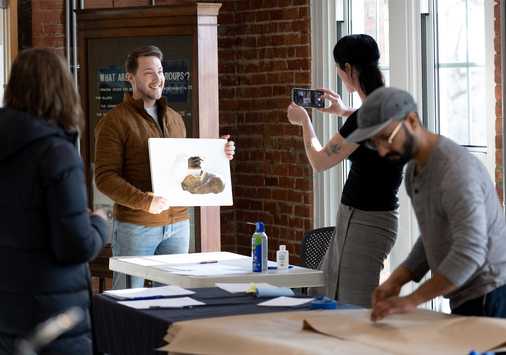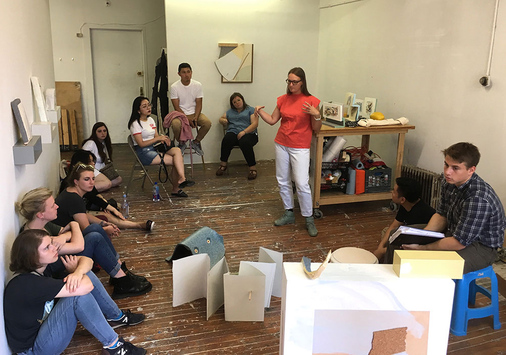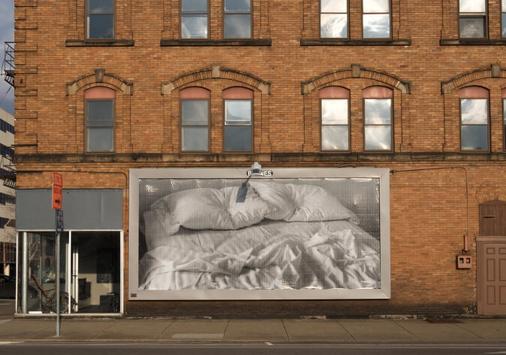Studio Art BFA Shruti Shankar co-wins Nan Nowik Artistic Expression award. Every year, the Women’s and Gender Studies Program presents its annual awards in honor of the late Dr. Nan Nowik, Associate Professor of English (1972-1988), former Women’s Coordinator, and co-founder of the Women’s Resource Center at Denison University. The awards were created to celebrate outstanding student work in academic scholarship, activism, and artistic expression.
Shankar states of her winning work, “This piece is my response to the resistance movement against the CAA in India in December and January of 2019-20. My work aims to center the women involved in the movement, acknowledging their work and creating spaces of empowerment, as they redefine care-work and existence as resistance.
In December 2019, crowds across India mobilized to protest an amendment (hate-based and anti-muslim) that rewrote citizenship, surveilling communities across the lines of religion, caste and sexuality. At the forefront of this resistance movement were India’s female and queer communities. I was inspired by the women of Shaheen Bagh – generations of homemakers – grandmothers, mothers and daughters who took to the streets of Delhi, redefining care-work and existence as resistance. Responding to my own in-betweeness of being away from home and the need to stay connected to it, I chose to show this piece as part of Queer @ Denison – Stonewall Columbus in solidarity with oppressed minorities engaging in acts of reclamation, across time and space.
This isn’t the first time in India’s history that women have helped keep the flame of protest alive. Other movements led by women include the Chipko Movement in 1973, anti-nuclear protests in Tamil Nadu in 1980 and the Narmada Dam protests in in 1985 to name a few. Perhaps it is the years of oppression that women, particularly women at the margins, have faced that makes them understand and thus, resist oppression more. However, the role of women in the socio-political world, particularly in developing countries, as we resist authoritarian governments, climate change and displacement, often goes unrecognized. In my practice, I hope to center these women, acknowledging their work and creating spaces of empowerment.
In this work, I focused on drawing the viewer in through the gesture of her hand as it breaks the frame of the piece. Despite the absence of recognizable facial features, the specificity of the figure is evident through skin-tone of her hand and cultural signifiers such as henna patterns, the hijab she wears, and the use of the bindi – traditional practices associated with women in India. The figure rises from and is a part of the landscape of mountains to highlight her strength and monumentality. The work is a mixed media installation consisting of multiple layers of screen-print, fabric, charcoal, india ink and color pencil on paper.”
This work is demonstration of the ways in which current events, personal experience and commitment to social justice intersect in the making of art. This piece went on to be included in a show at the Stonewall Columbus gallery, curated by Professor Ron Abram in Spring 2020.















